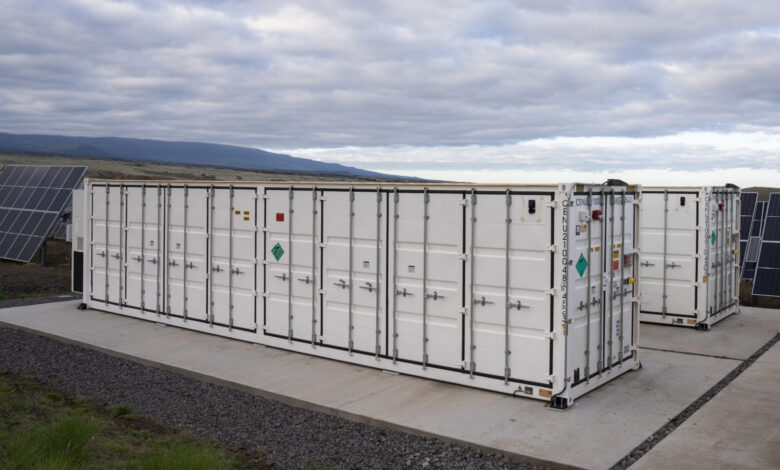What Is a Battery Energy Storage System?

In today’s evolving energy landscape, where clean power and grid stability are more important than ever, the battery energy storage system (BESS) has emerged as a critical innovation. This technology is helping homes, businesses, and entire nations better manage electricity supply, reduce dependence on fossil fuels, and enhance energy resilience.
But what exactly is a battery energy storage system? How does it work, and why should you consider integrating one into your energy strategy?
What Is a Battery Energy Storage System?
A battery energy storage system is a technology that captures and stores electricity, usually from renewable sources like solar or wind, so it can be used later. Instead of letting unused power go to waste, BESS ensures that energy is available when it’s needed most, whether during a blackout, peak demand hours, or at night.
Modern systems are often containerised, modular, and scalable. Units like the battery energy storage system by LZY Energy come ready for deployment and are built for high efficiency and reliability.
How Does a Battery Energy Storage System Work?
At its core, a BESS involves four main components:
1. Battery Pack
The heart of the system. It stores electricity in chemical form, most commonly using lithium iron phosphate (LiFePO₄) technology for maximum safety and performance.
2. PCS (Power Conversion System)
The PCS is responsible for converting electricity between AC and DC forms, making it usable by homes, businesses, and the grid. It also manages voltage regulation and load balancing.
3. Battery Management System (BMS)
An intelligent monitoring system that ensures the battery operates safely. It detects overcharging, overheating, and short circuits, and shuts the system down if necessary.
4. Energy Management System (EMS)
This software-driven tool optimises energy use, schedules charging/discharging, and integrates the storage unit with other grid or on-site systems.
Key Benefits of a Battery Energy Storage System
Energy Independence
Reduce or eliminate reliance on the grid. During outages or unstable grid conditions, BESS keeps your lights and business on.
Renewable Energy Optimisation
Pairing with solar or wind ensures that excess energy is stored and available for later use. No more wasted green power.
Cost Efficiency
Use stored power during peak rate times when electricity is expensive. Sell excess back to the grid where regulations allow.
Grid Stabilisation
For commercial users and utilities, BESS provides frequency regulation, peak shaving, and voltage support.
Who Uses Battery Energy Storage Systems?
Residential Homes
Store solar power during the day and use it at night. Protect your home from blackouts.
Businesses & Industries
Control electricity bills, maintain operations during outages, and participate in demand response programs.
Utilities
Balance generation and consumption across wide grids. Deploy energy rapidly during peak hours.
Microgrids & Remote Areas
Deliver reliable, round-the-clock energy where grid access is limited or unavailable.
Why the Power Conversion System (PCS) Matters
Many overlook the importance of the PCS but it’s arguably one of the most critical components. Without it, your batteries can’t properly communicate with the grid or your appliances.
LZY’s high-performance PCS systems offer:
- Bi-directional energy flow
- Fast response times
- High conversion efficiency
- Seamless integration with solar inverters and diesel generators
Combined with a robust battery pack, the PCS ensures that your battery energy storage system operates flawlessly, even under dynamic load conditions.
Deploying Your Battery Storage System
Thinking about installing a BESS? Here’s a simplified process:
1. Assess Your Energy Profile
Evaluate how much energy you consume, your peak usage hours, and your current power sources.
2. Choose the Right System Size
Select a containerised BESS that meets your kWh and kW requirements. LZY offers flexible configurations to suit residential and industrial needs.
3. Include the Right PCS
Ensure you integrate a compatible PCS to manage AC/DC conversion efficiently.
4. Professional Installation
Hire certified technicians to install, configure, and test the system for optimal safety and performance.
5. Monitor & Optimise
Use EMS dashboards to track your savings, monitor usage, and schedule charging cycles.
How Modern BESS Are Built to Protect
Modern systems like those offered by LZY are engineered with safety as a top priority:
- Fire suppression systems
- Overvoltage/undervoltage protection
- Temperature-controlled enclosures
- Smart shutdown protocols
- Real-time monitoring and alerts
These features make BESS one of the safest, most reliable investments in your energy future.
The Rise of Battery Storage
Solar-Powered Industrial Facility in Asia
By installing a battery energy storage system with a powerful PCS, a factory cut energy costs by 35% and experienced zero downtime during grid failures.
Island Microgrid in the Pacific
Remote villages now enjoy 24/7 power thanks to solar energy coupled with containerised BESS units. Residents no longer rely on expensive diesel generators.
Conclusion
A battery energy storage system is more than a power backup; it’s an energy optimiser, cost reducer, and sustainability enabler. Whether you’re powering a home, scaling a business, or running a remote grid, combining storage with a smart PCS gives you full control over your power supply.
Leap energy independence, lower costs, and a greener tomorrow. The future of energy isn’t just renewable, it’s stored and ready when you are.



